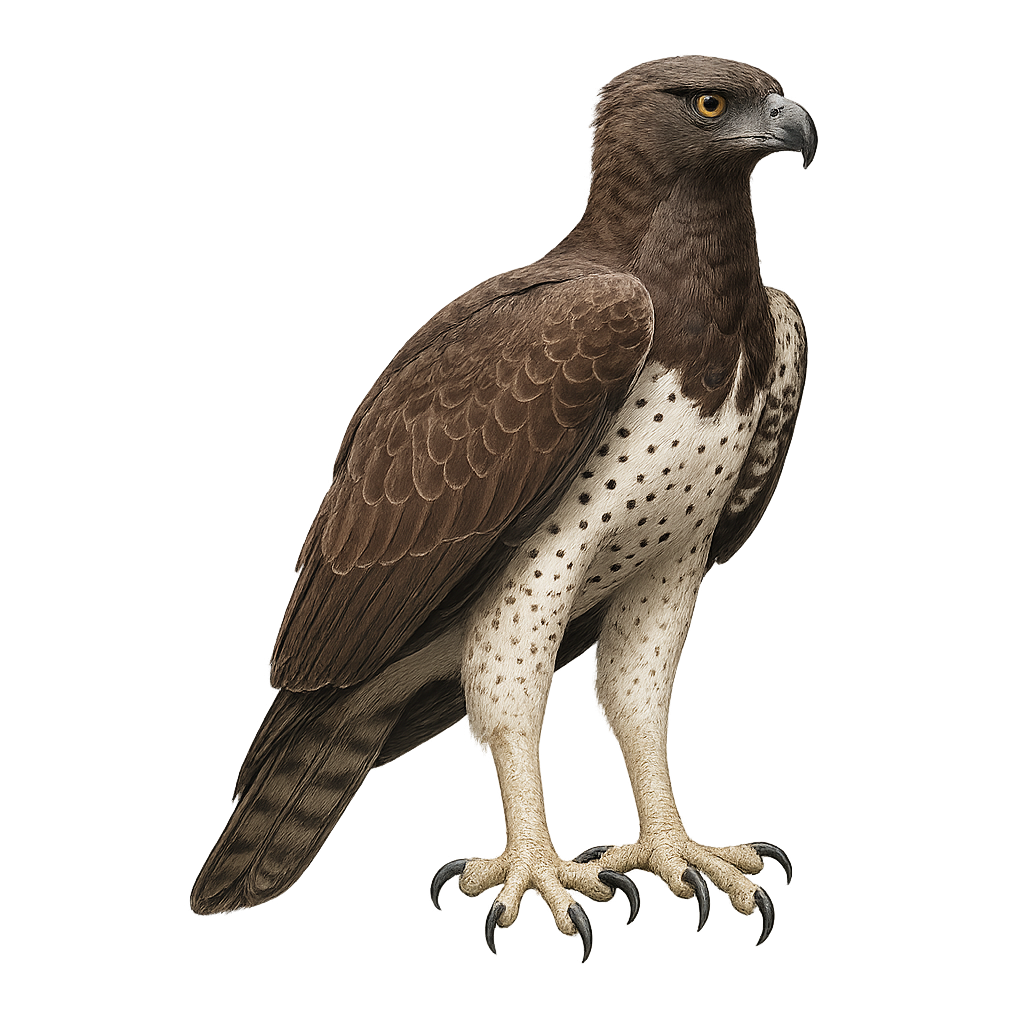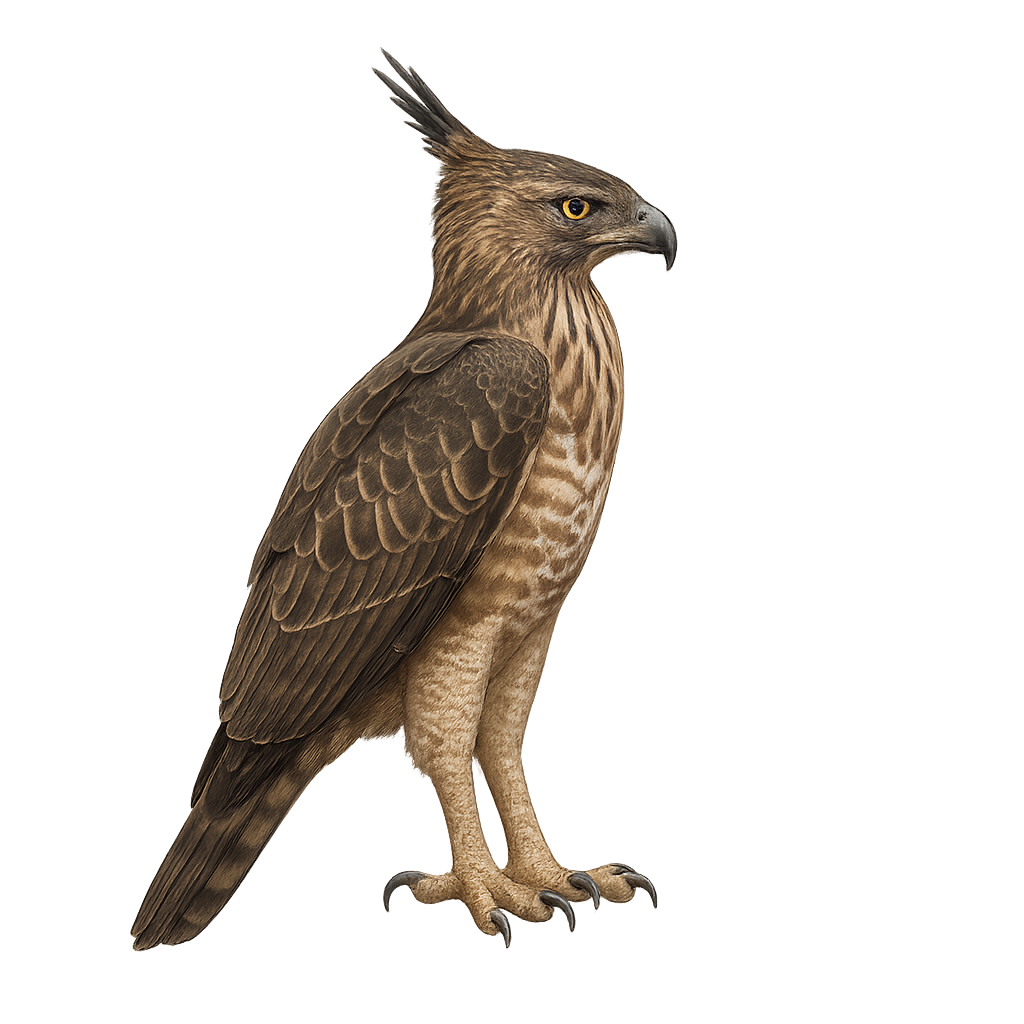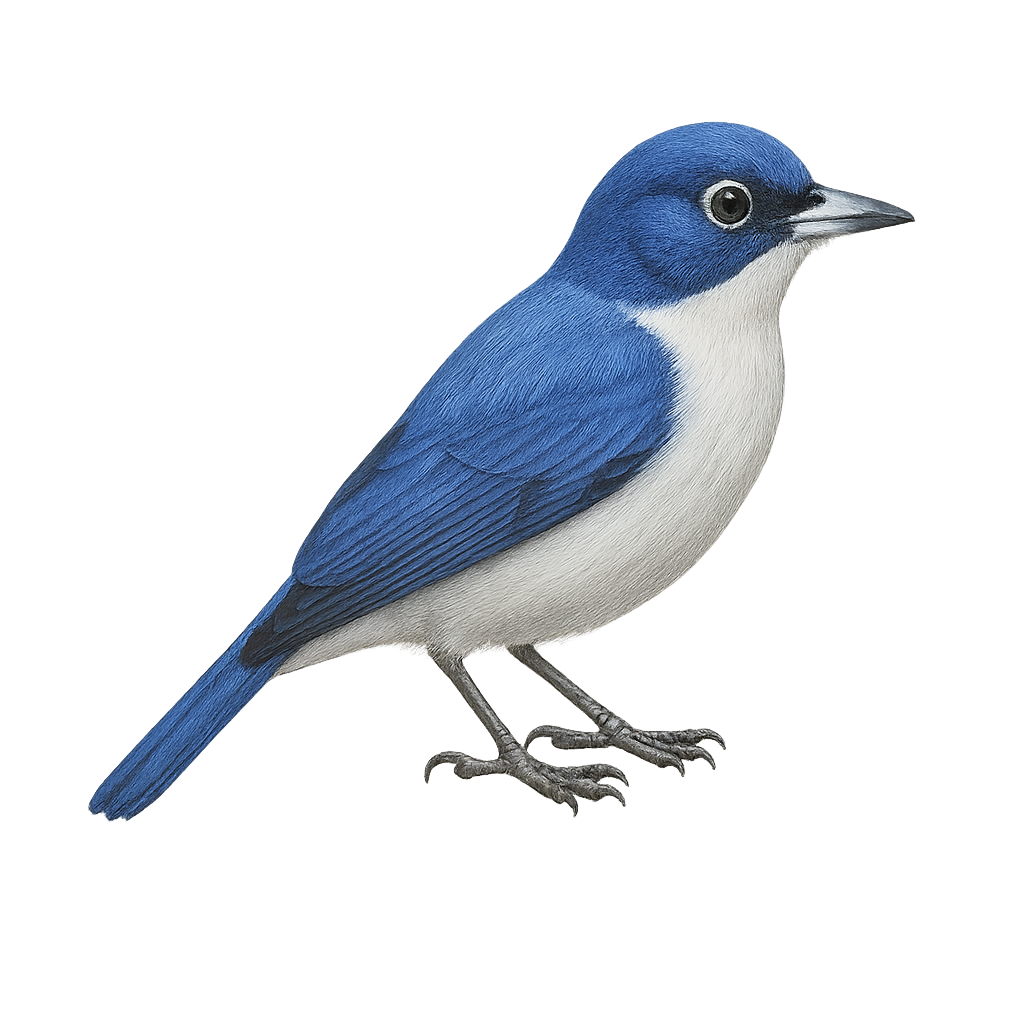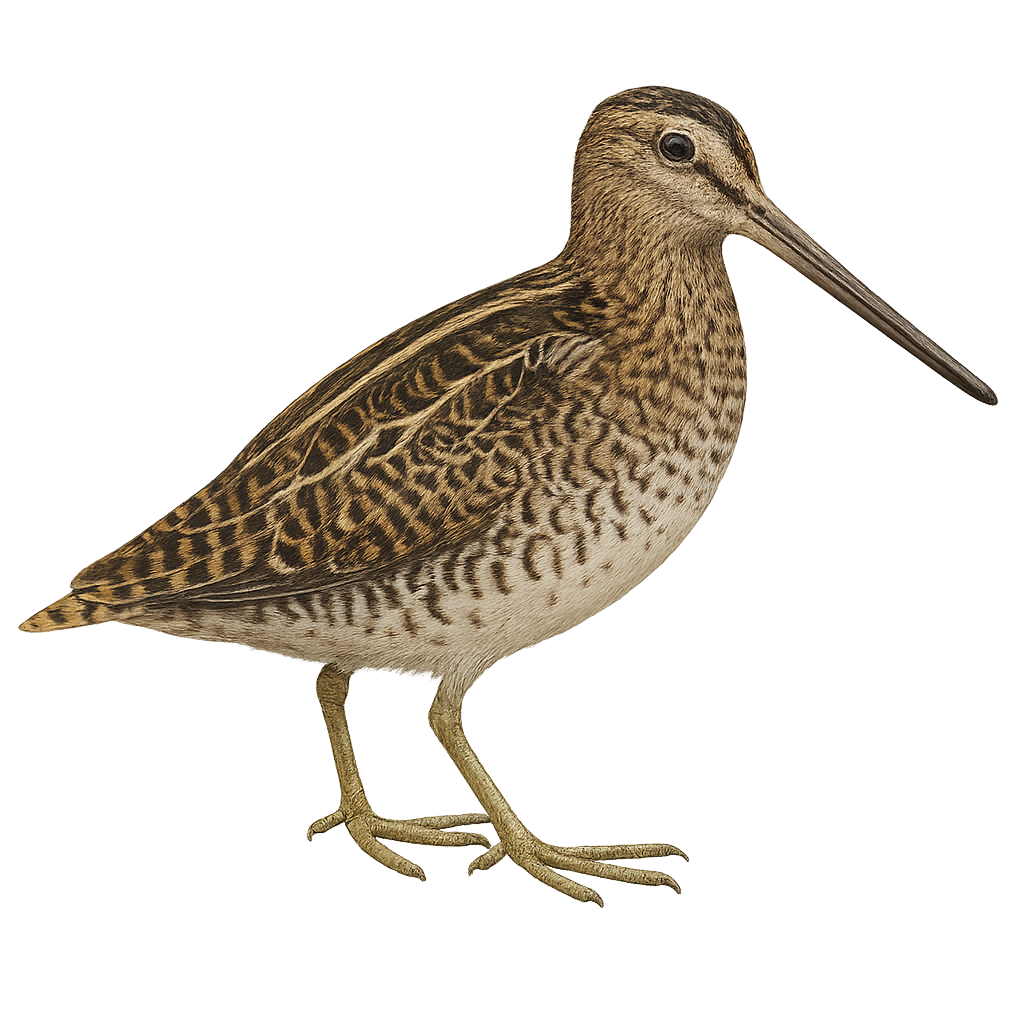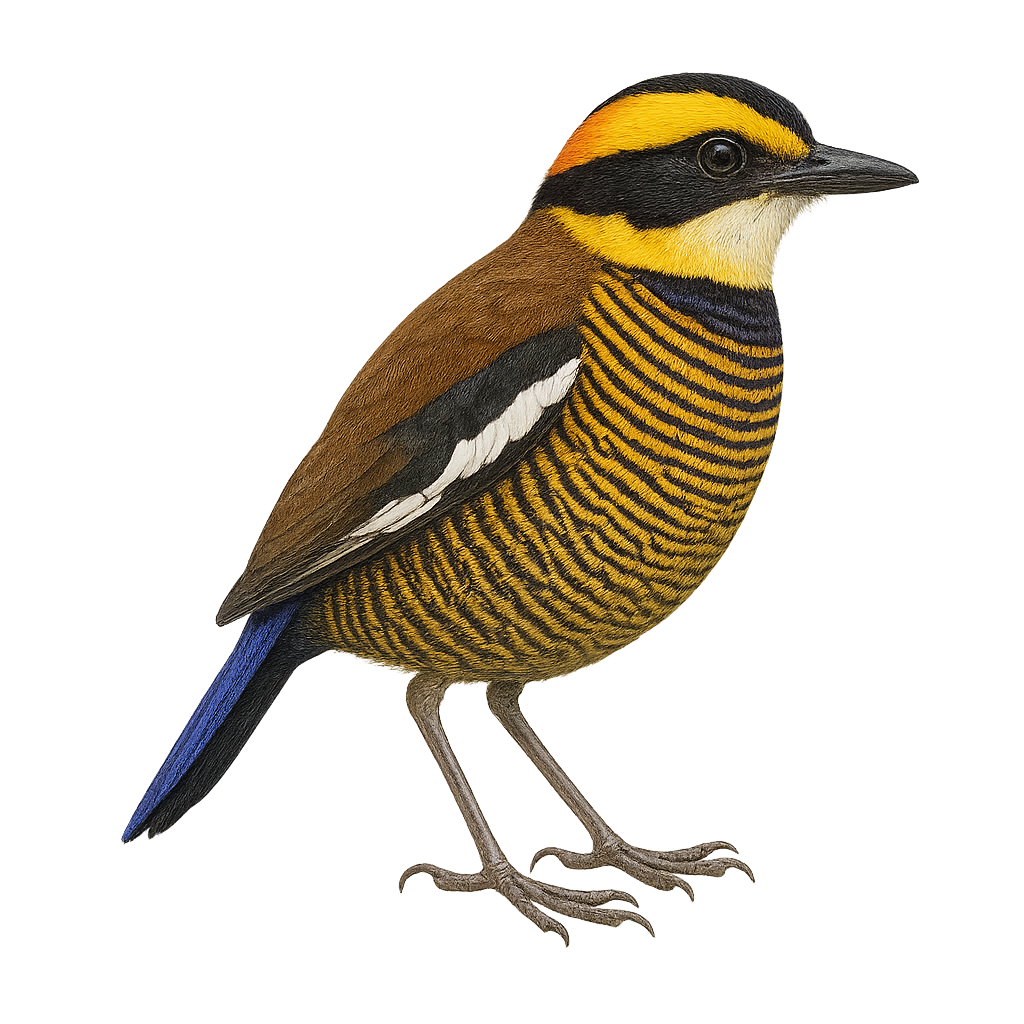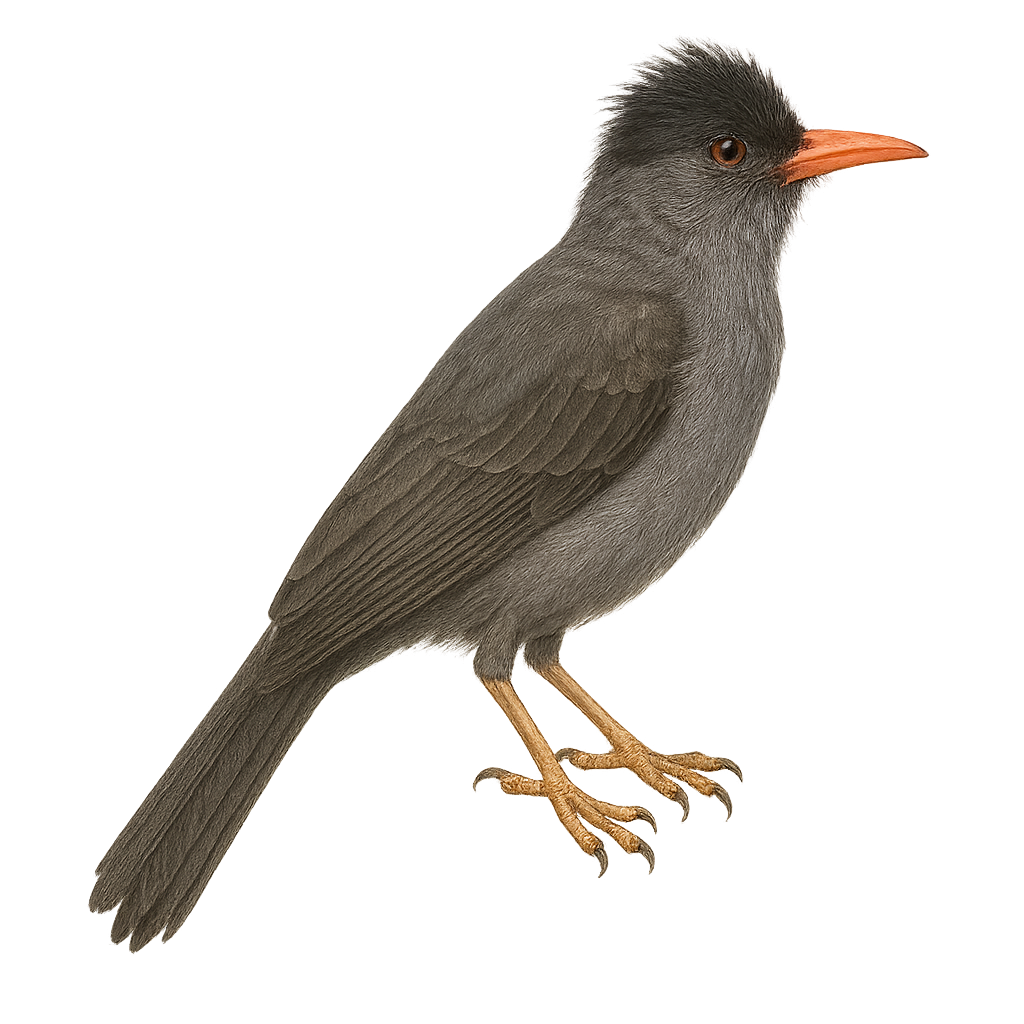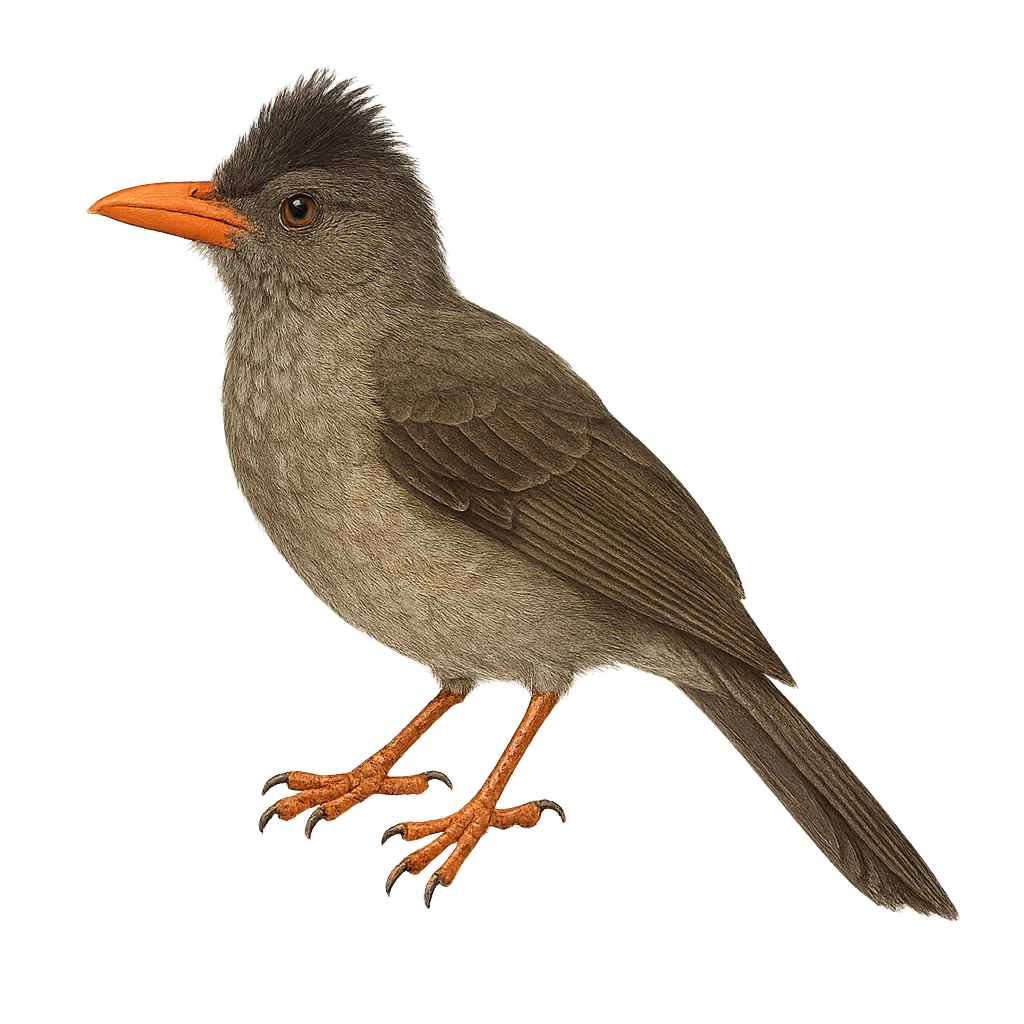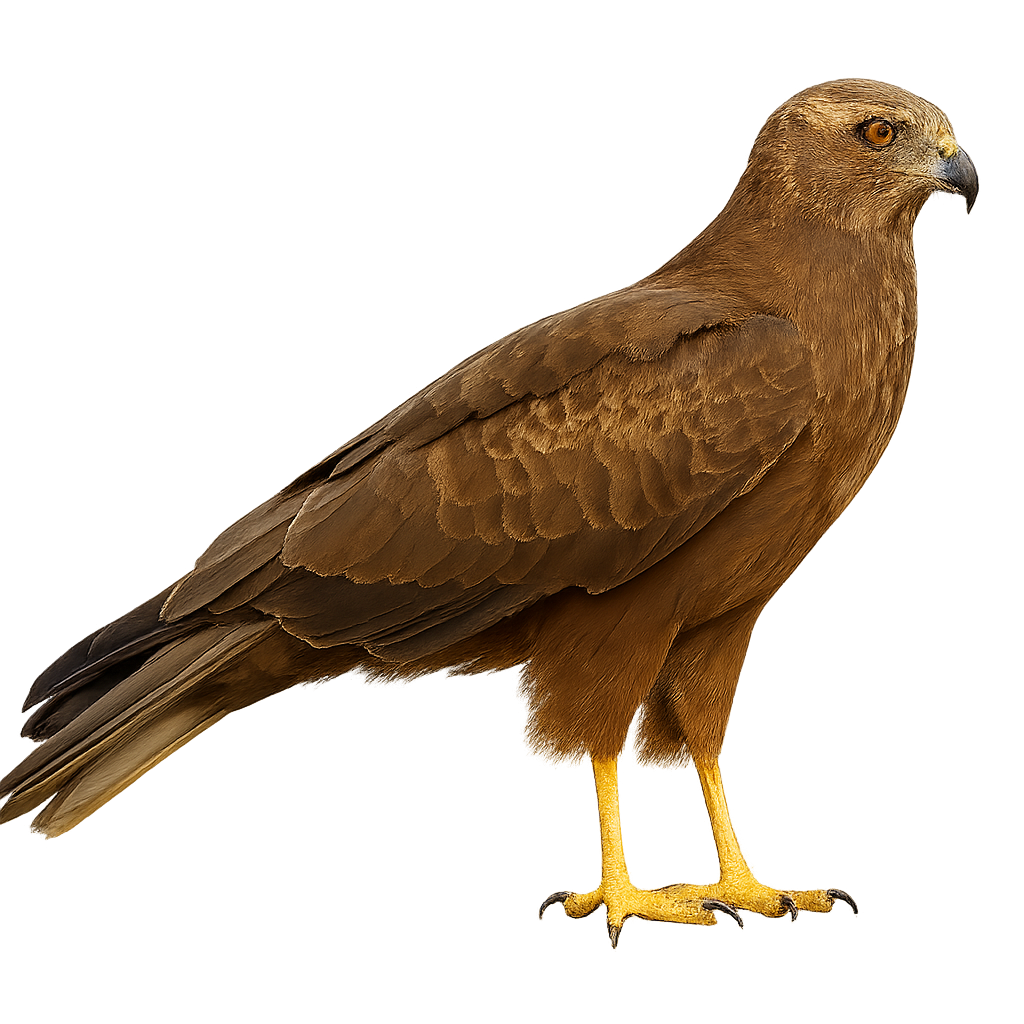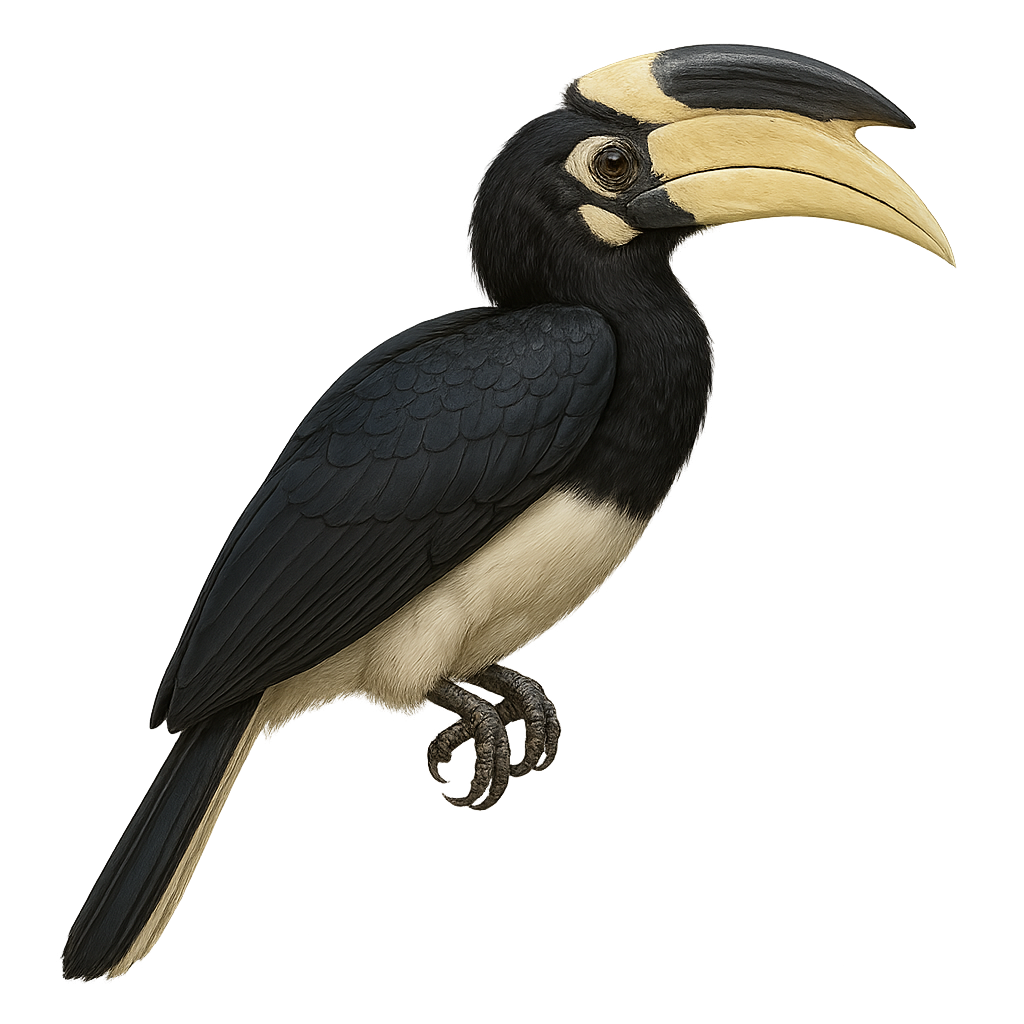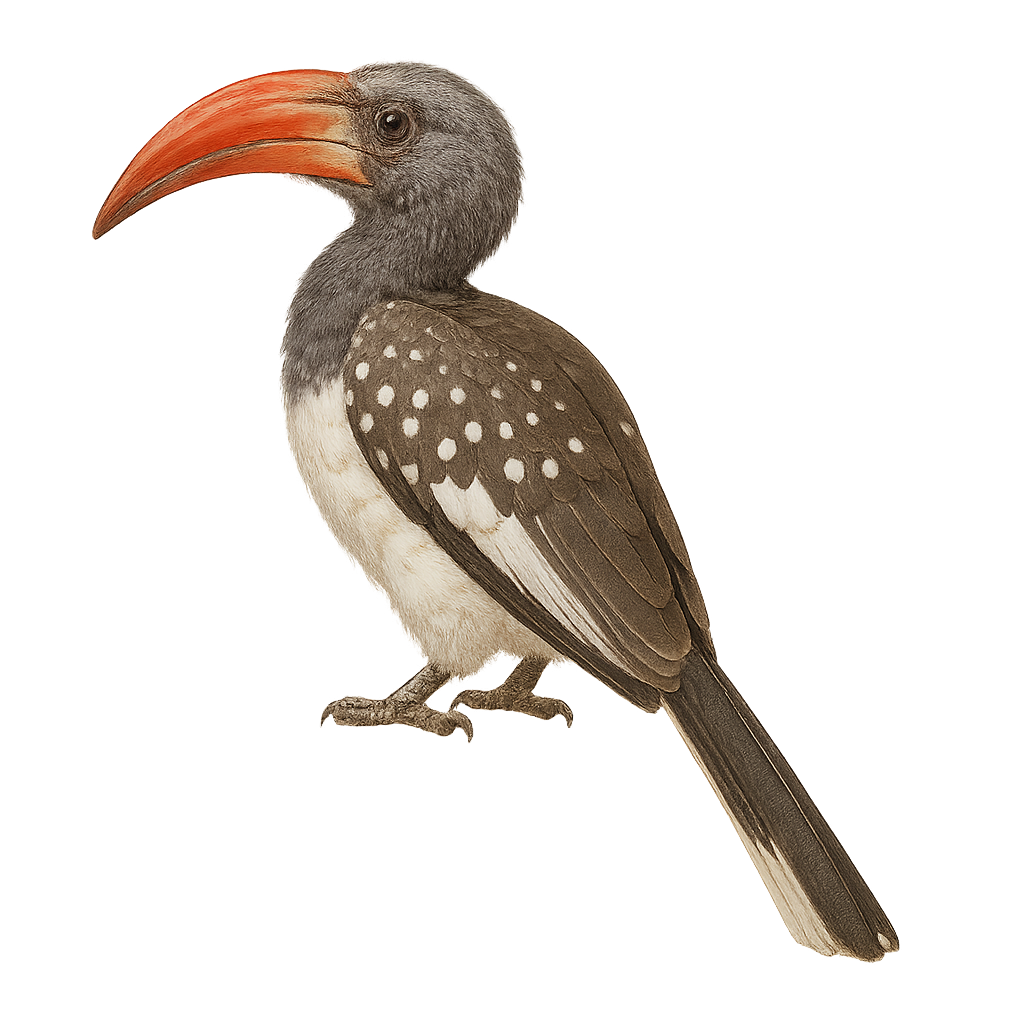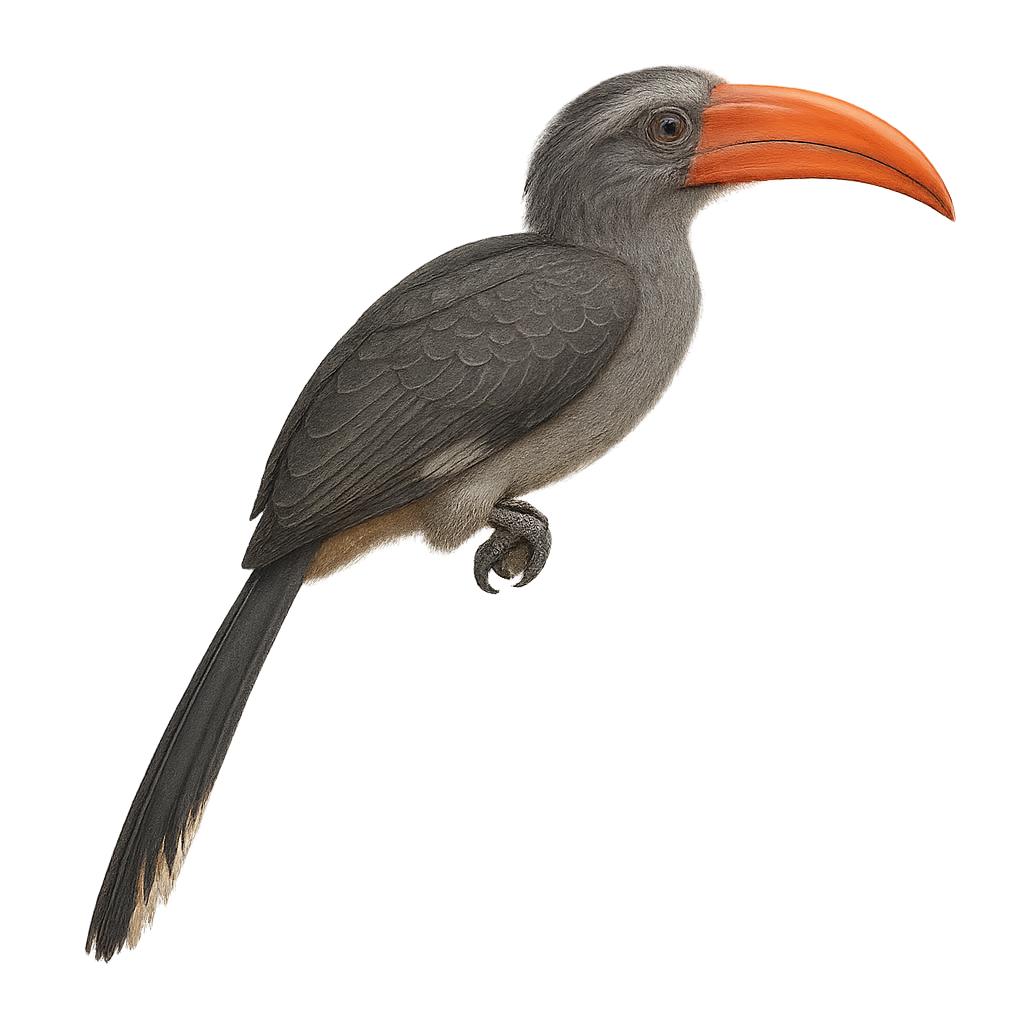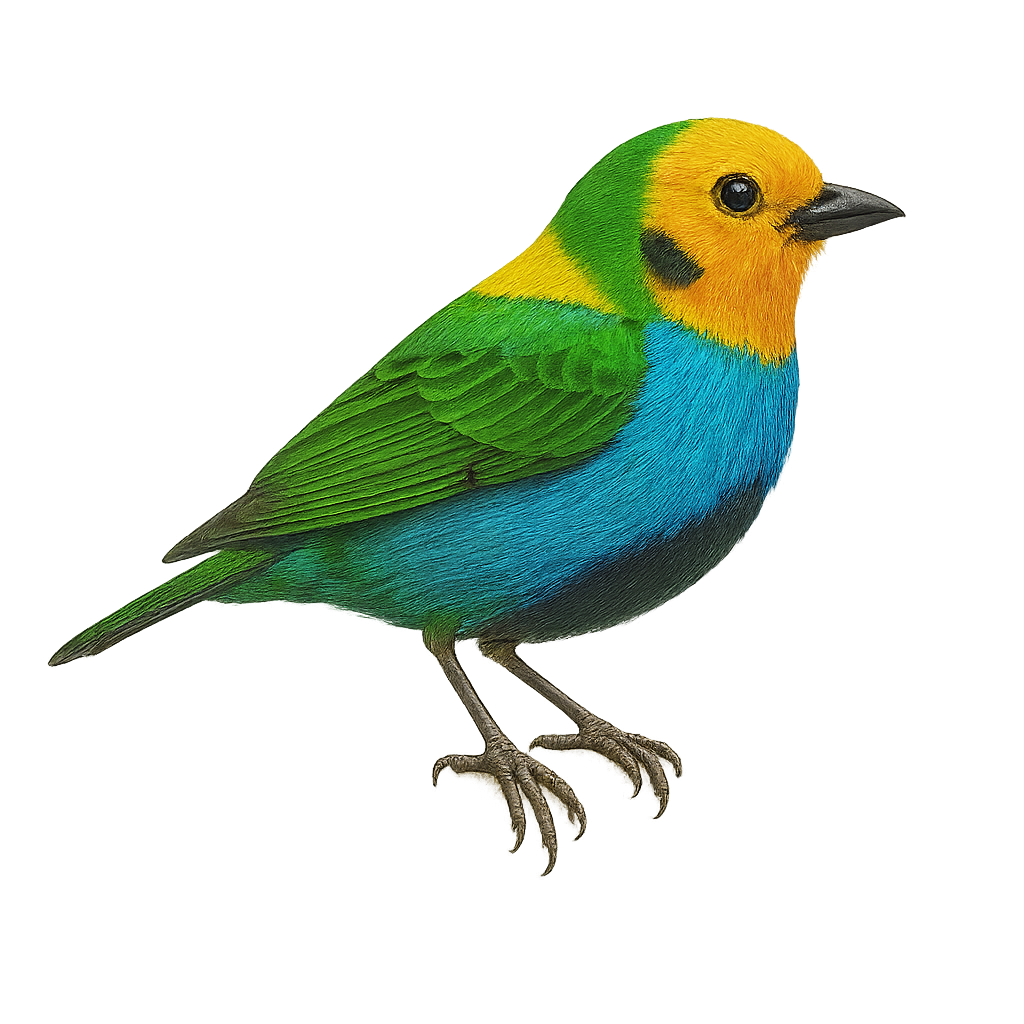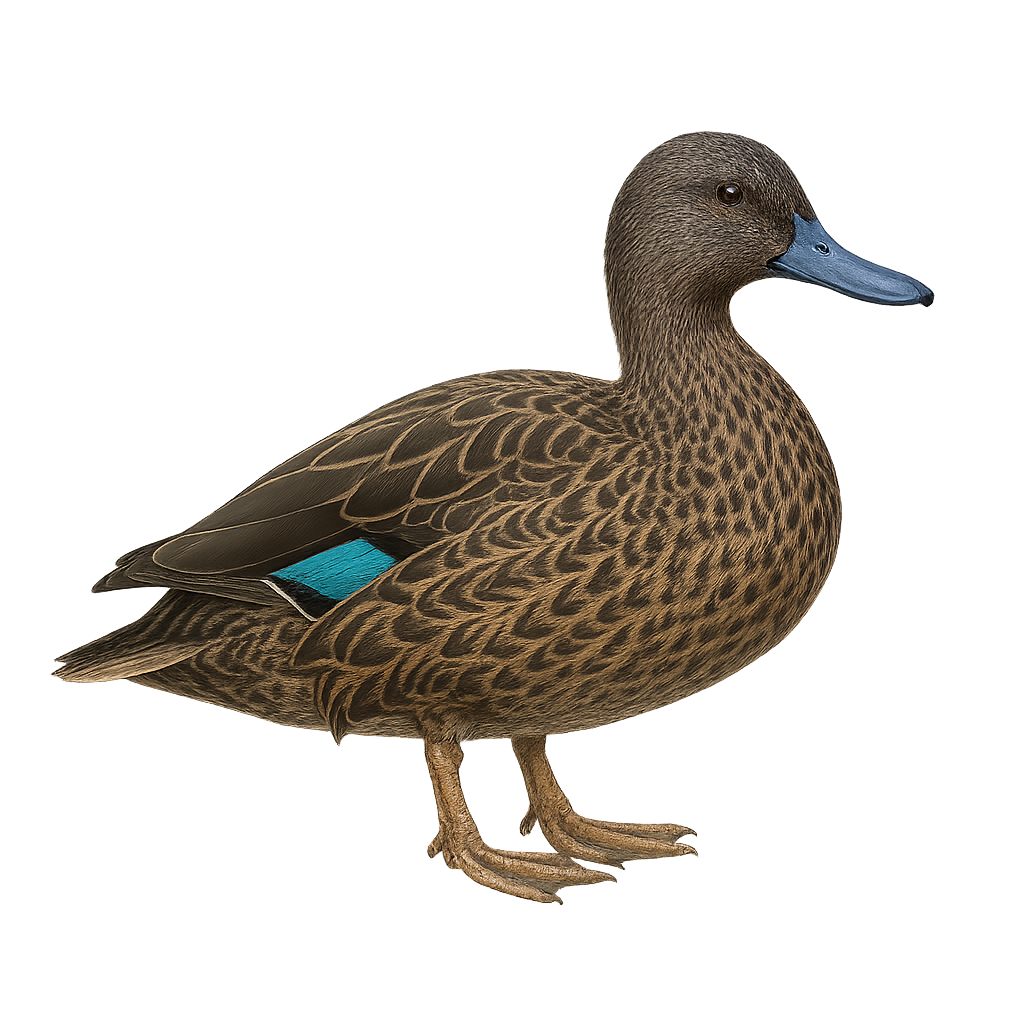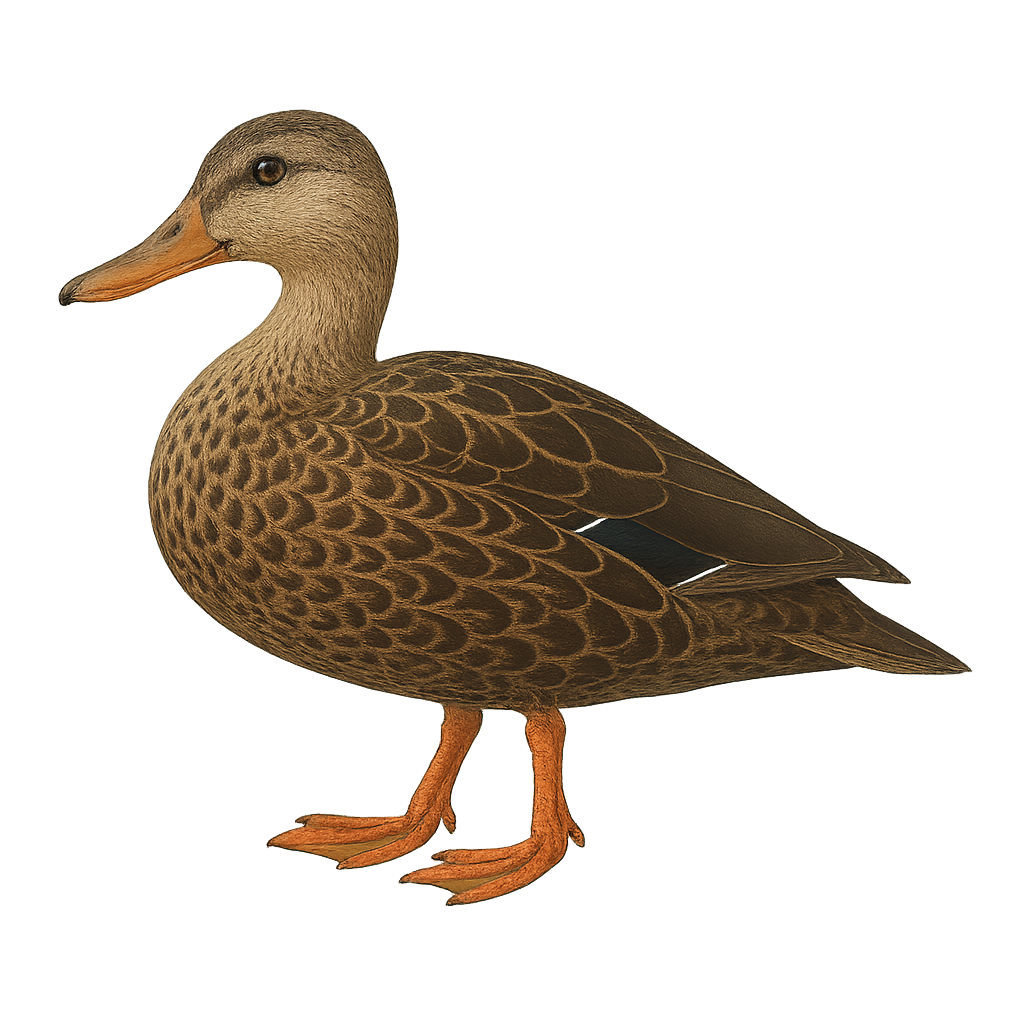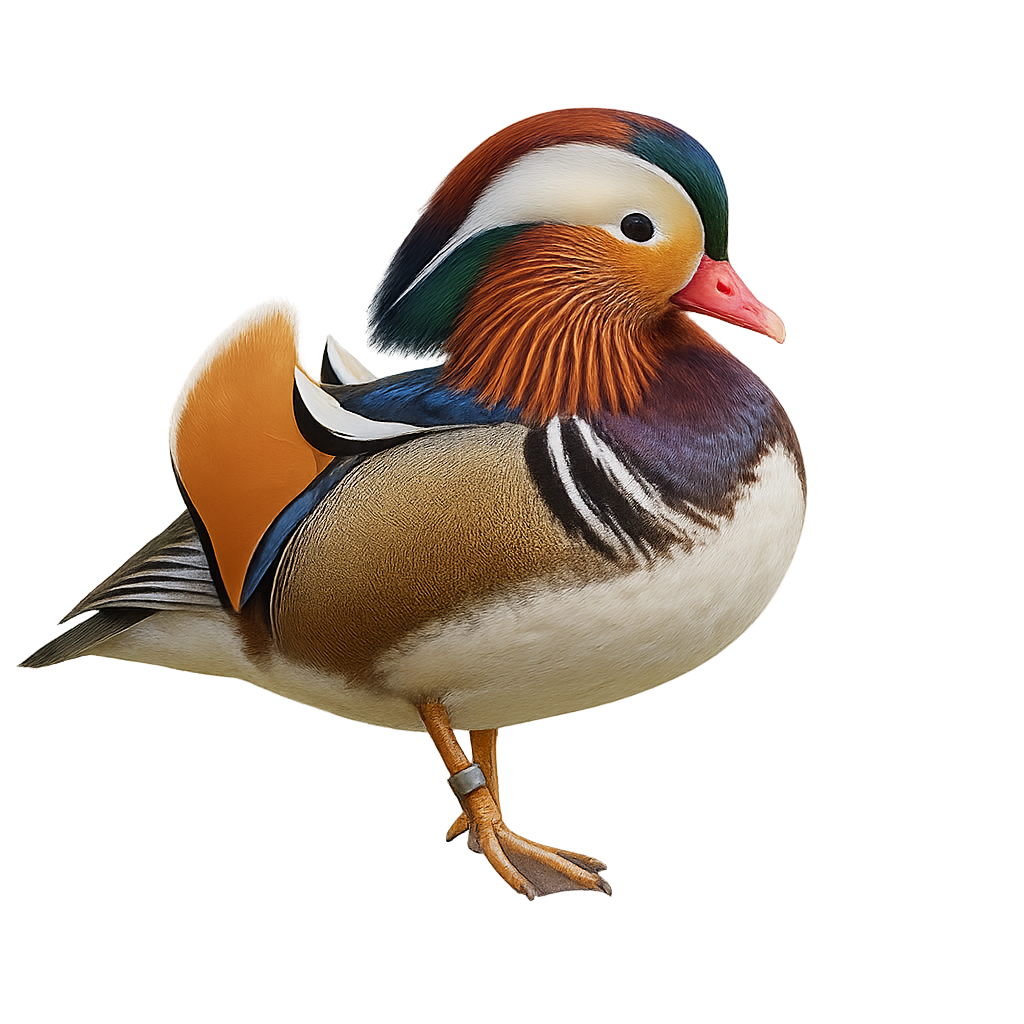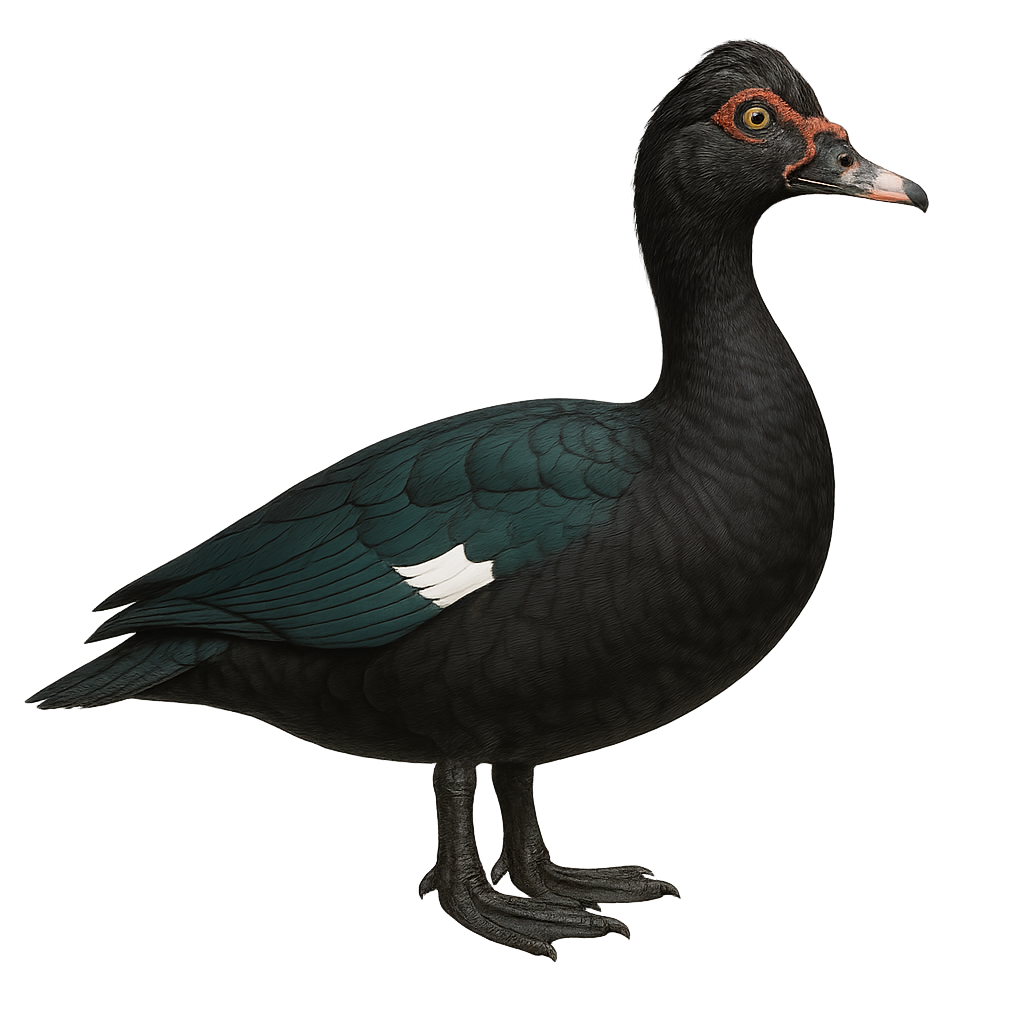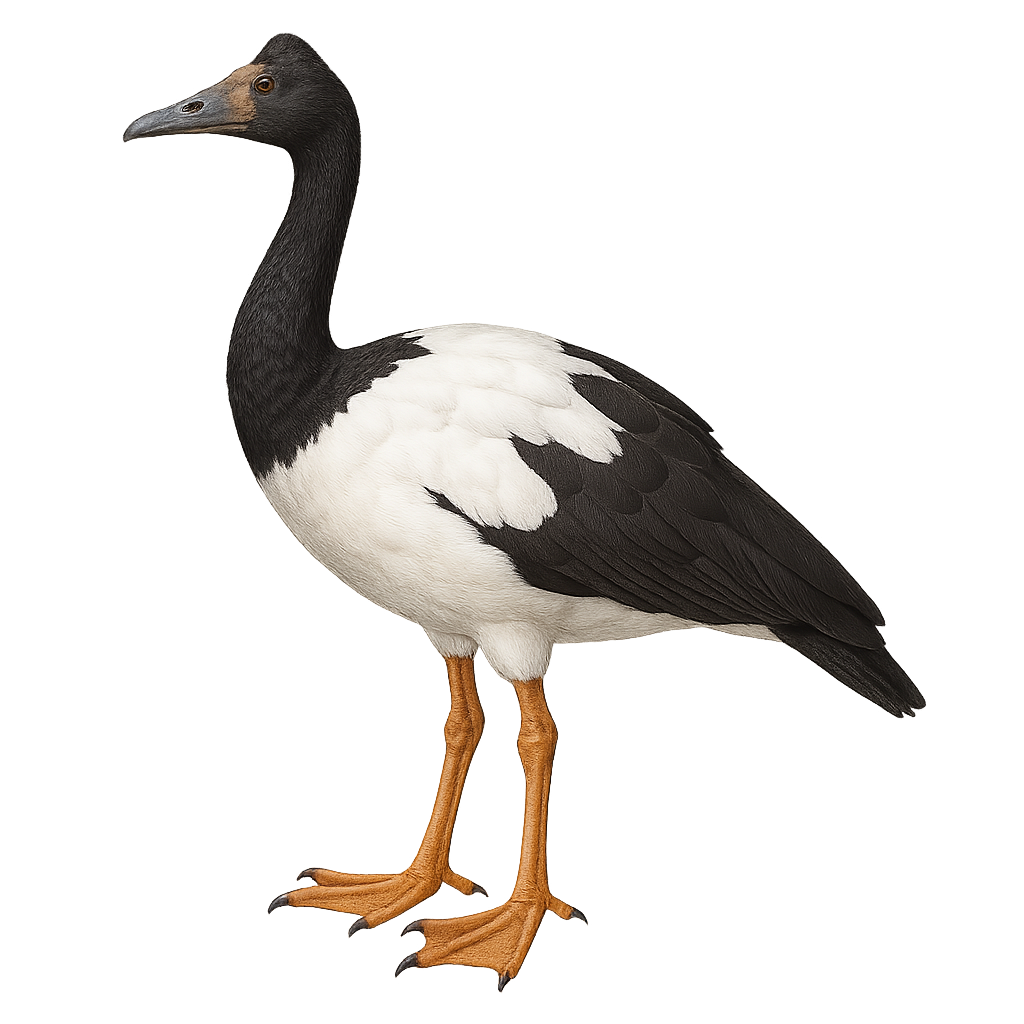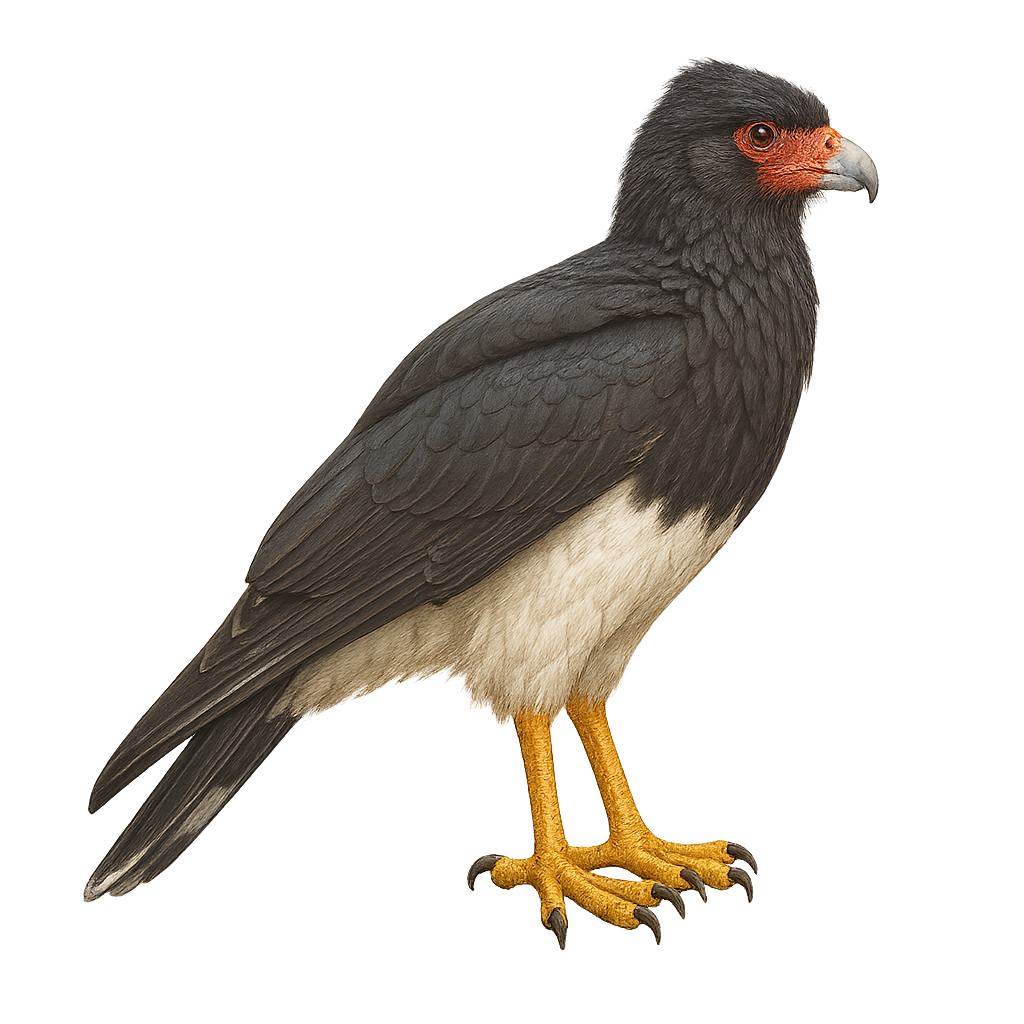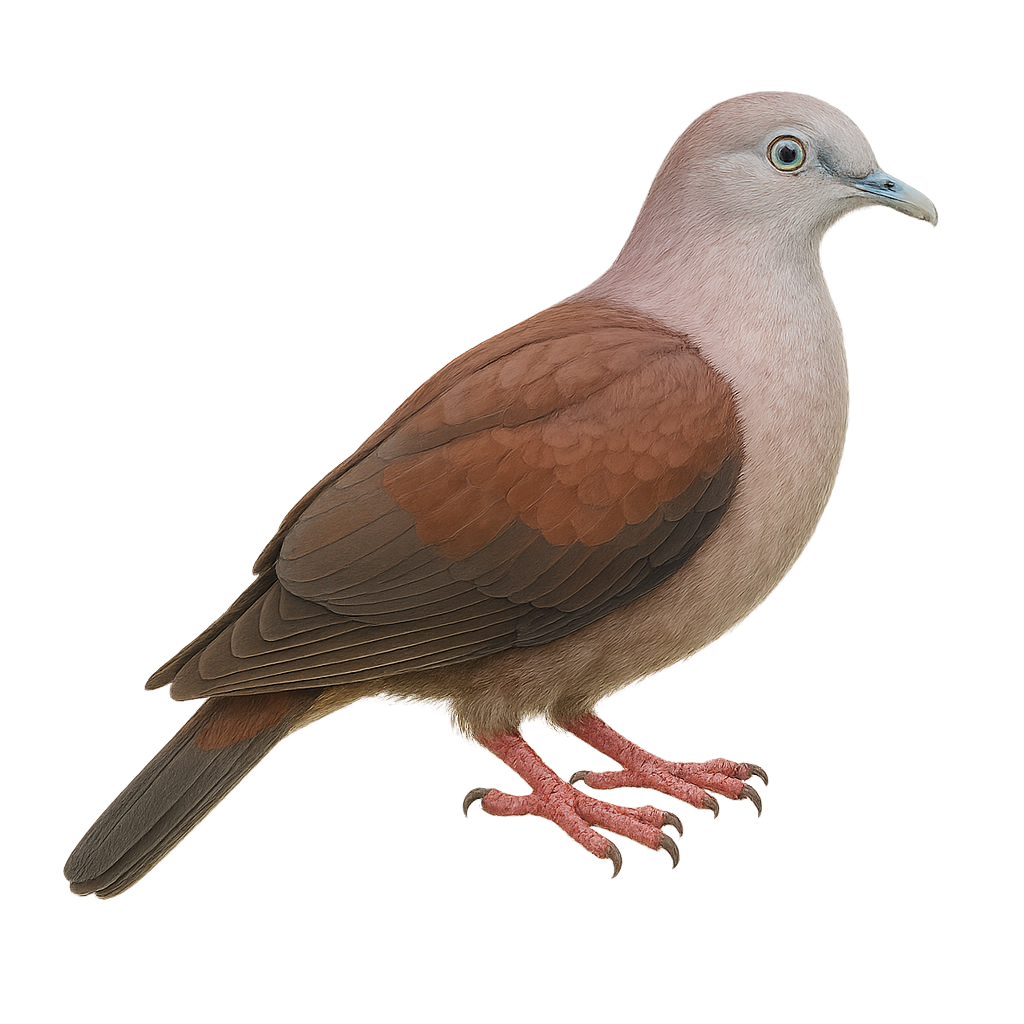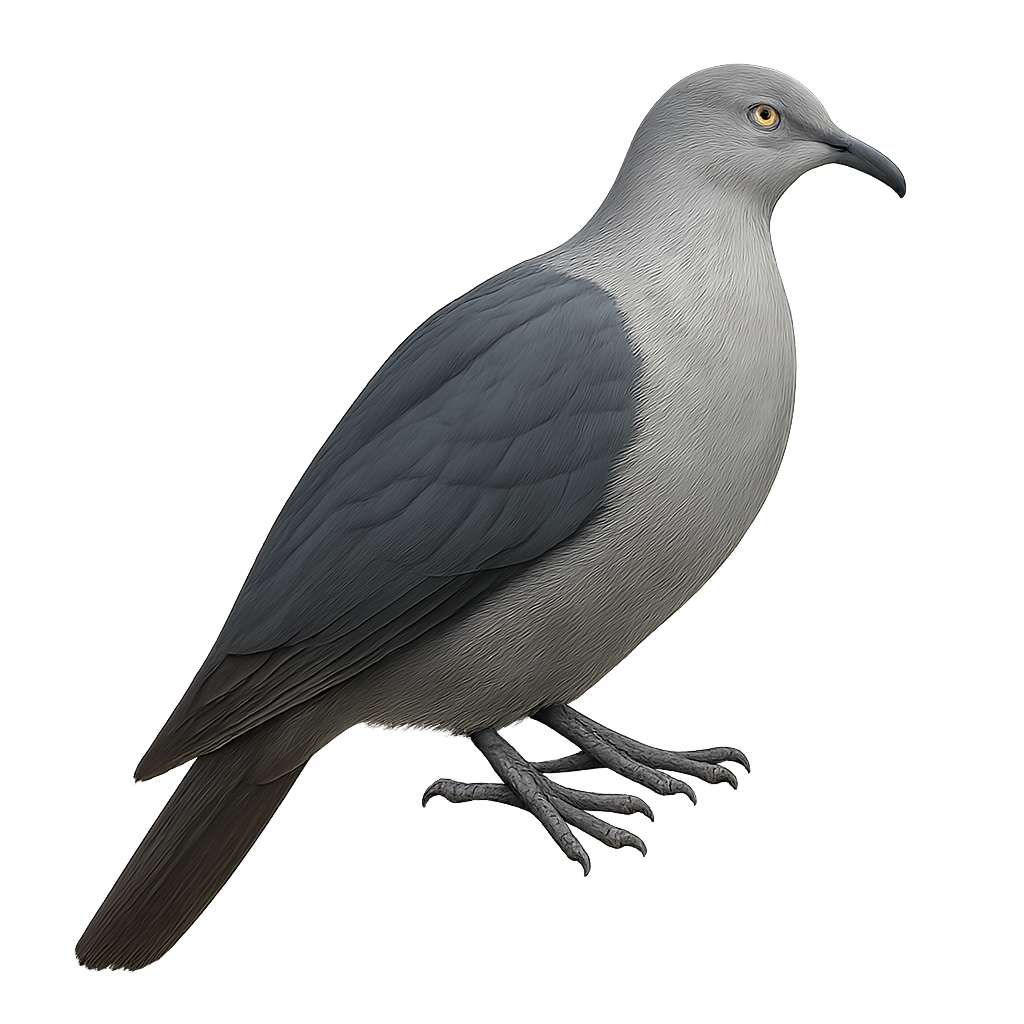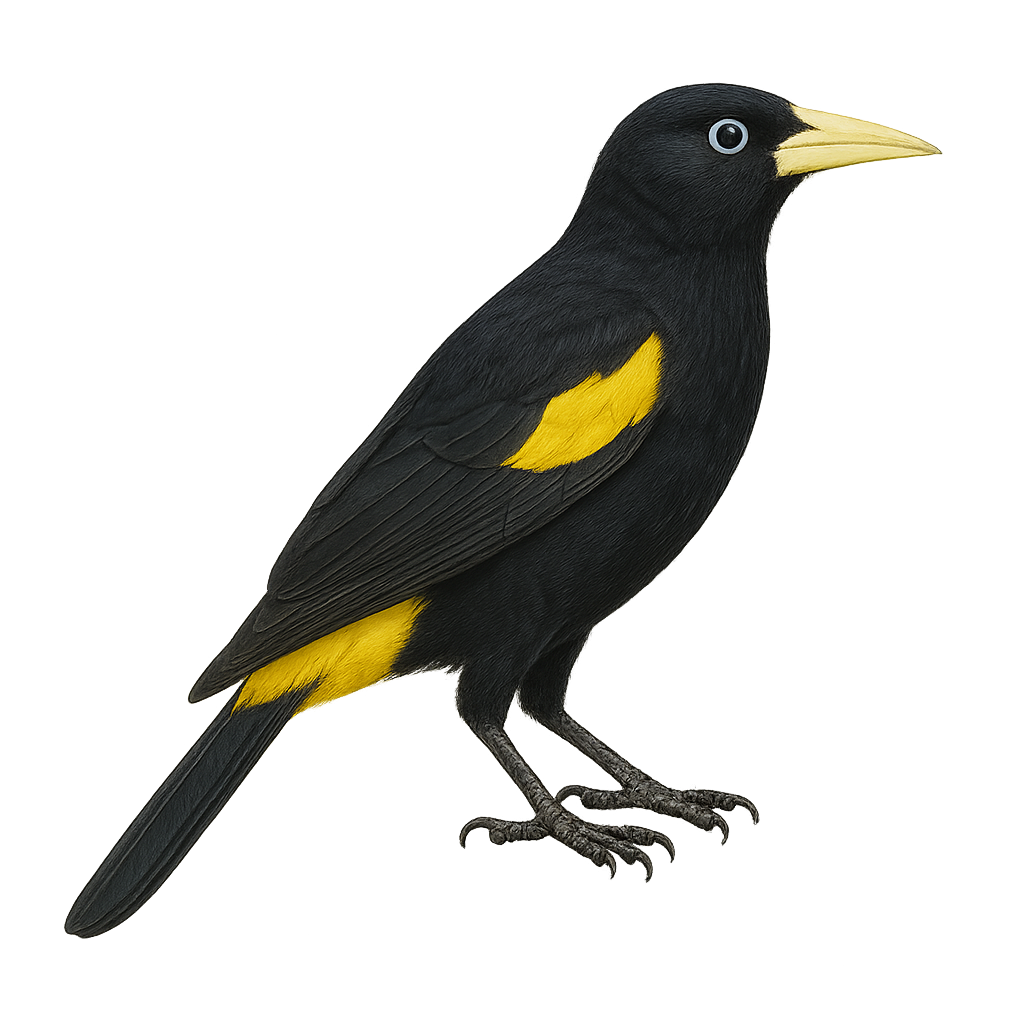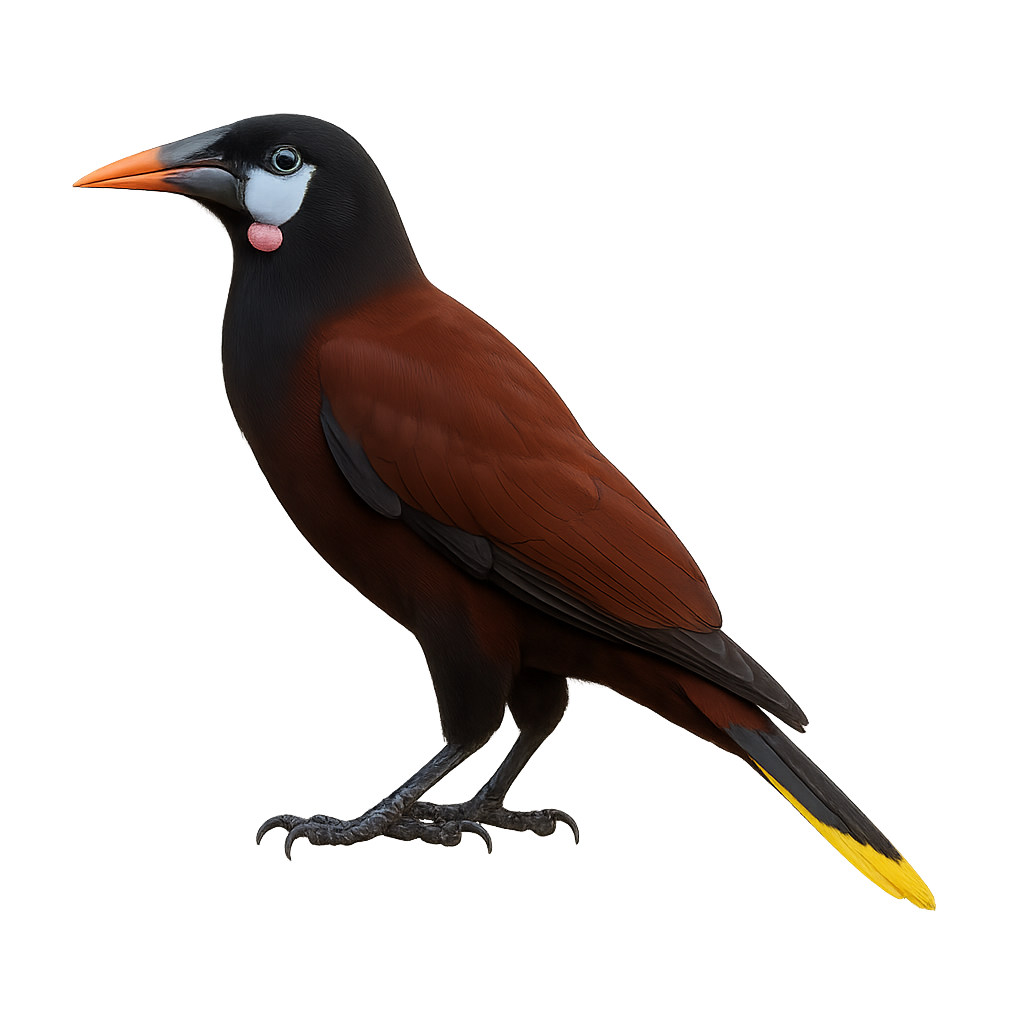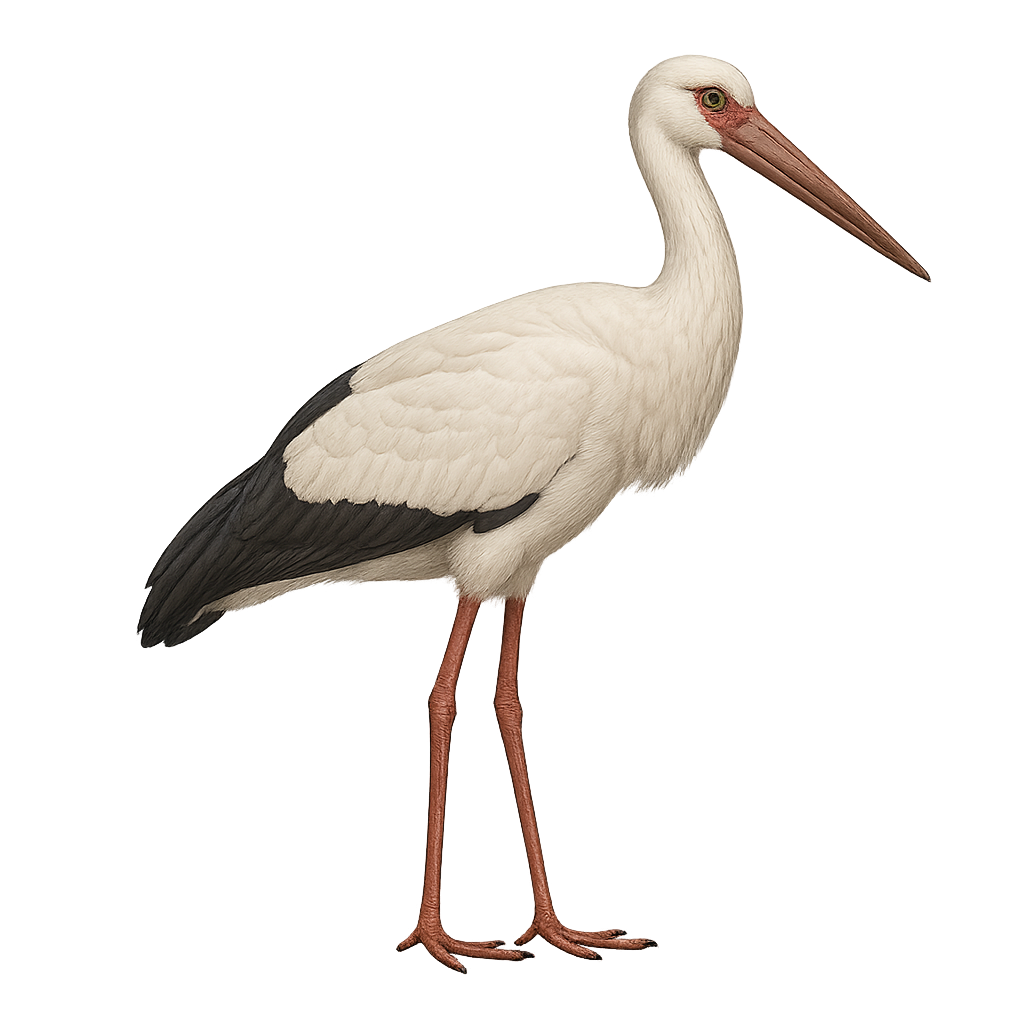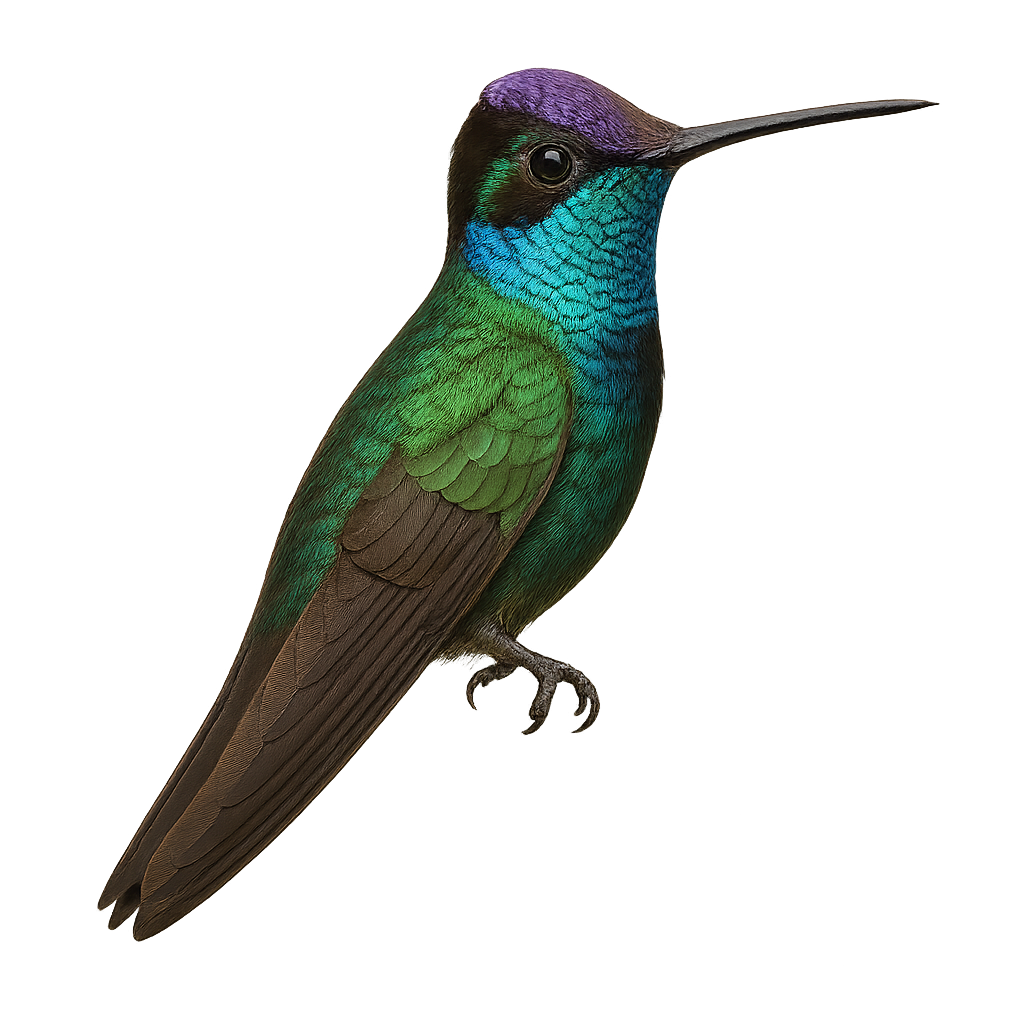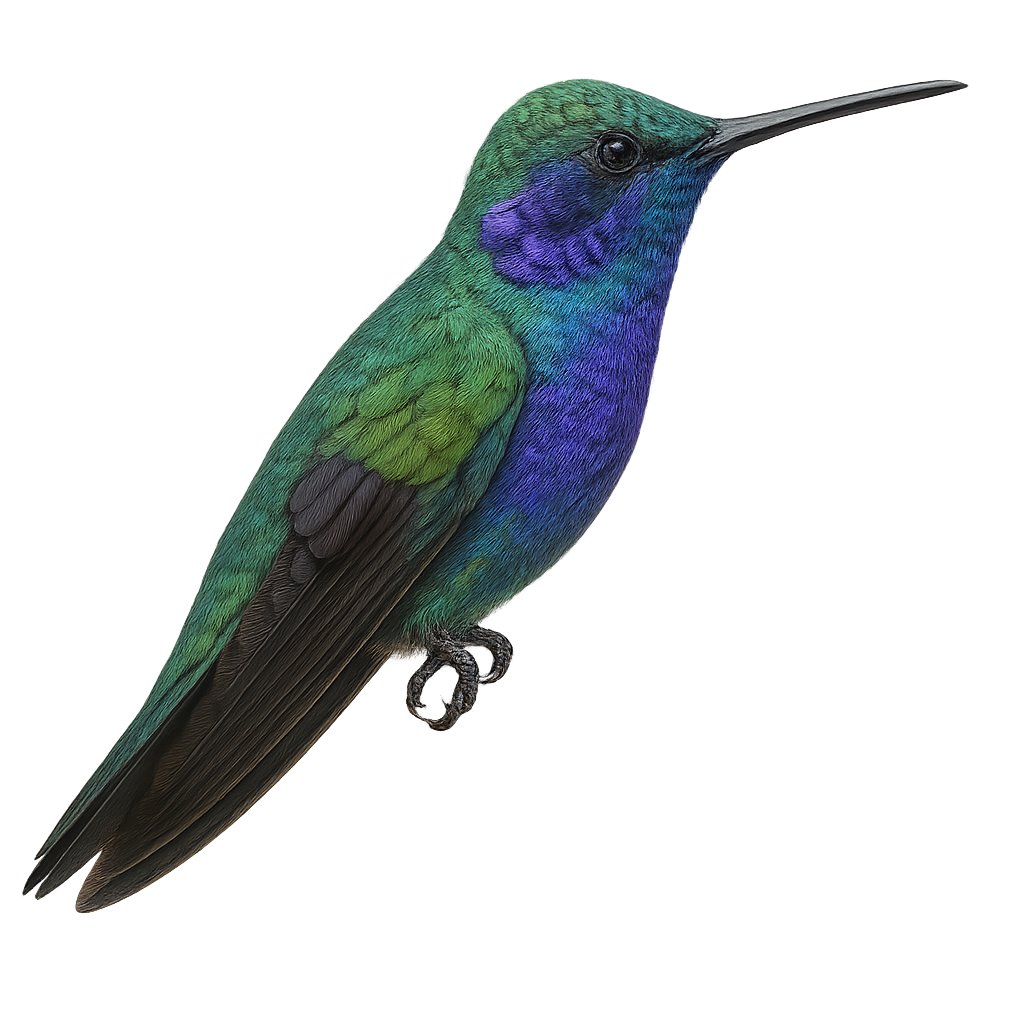The Martial Eagle, Polemaetus bellicosus, is one of Africa's largest eagles, renowned for its power and majesty. It features dark brown plumage on its back and wings, while its belly is white with dark spots. Its impressive wingspan can reach up to 2.6 meters, allowing it to soar effortlessly across African skies. A formidable predator, it primarily feeds on medium-sized mammals, birds, and occasionally reptiles. It prefers savannas, open grasslands, and sparsely wooded areas. Although its status is concerning due to habitat loss and human persecution, it remains a symbol of African wildlife.
The Mountain Hawk-Eagle, Nisaetus nipalensis, is a majestic raptor primarily inhabiting the mountainous forests of Southeast Asia. This large eagle is distinguished by its dark brown plumage, broad wings, and long, barred tail. It has a distinctive crest on its head, often raised, giving it an imposing appearance. A formidable predator, it primarily feeds on small mammals, birds, and reptiles. Its keen eyesight allows it to spot prey from great distances. Although discreet, it is sometimes observed soaring above forests in search of food. The species is currently classified as near threatened due to the loss of its natural habitat.
The Many-banded Aracari, a captivating bird from the Ramphastidae family, is known for its colorful plumage and large bill. Native to the humid tropical forests of South America, particularly the Amazon, it is often seen in small groups. Its plumage features a vibrant mix of colors, with distinct bands on its body and bill. This bird is primarily frugivorous but can also consume insects and small vertebrates. It plays a crucial role in seed dispersal, aiding forest regeneration. Although relatively tolerant of human presence, respecting its natural habitat is vital for its survival.
The Madagascar Blue Vanga, or Cyanolanius madagascarinus, is an endemic bird of Madagascar, belonging to the Vangidae family. It is characterized by its striking blue plumage and black facial mask, contrasting with its white belly. This bird is mainly found in the island's humid forests and wooded areas. It primarily feeds on insects and small invertebrates, which it skillfully captures with its robust beak. The Madagascar Blue Vanga is a diurnal bird, active mainly during the day. Although it is relatively not very shy, it remains cautious and prefers dense areas to hide from predators. Its population is currently stable, but deforestation poses a potential threat to its natural habitat.
The Marbled Godwit is a large shorebird known for its long, slightly upturned bill and mottled brown plumage. It primarily inhabits wetlands and flooded grasslands in North America. During the breeding season, it migrates to the prairies of central Canada and the United States. It feeds mainly on insects, crustaceans, and worms found in the mud. Outside the breeding season, it migrates to the southern coasts of the United States and Central America. This species is noted for its graceful flights and melodious calls. Although its population is stable, it is sensitive to habitat destruction.
The Scolopax mira, or mysterious woodcock, is a fascinating bird that intrigues ornithologists with its discreet behavior and lifestyle. It is distinguished by its brown mottled plumage, which allows it to blend perfectly into its forest environment. This bird is generally found in dense, humid forests, where it primarily feeds on earthworms and insects. The mysterious woodcock is known for its spectacular courtship displays, often performed at dusk. Although its behavior is generally shy, it can sometimes be observed more closely by patient watchers. Its ability to remain motionless for long periods makes it difficult to spot, adding to its aura of mystery.
The Madagascar Snipe, or Gallinago macrodactyla, is an endemic bird of Madagascar, primarily found in the island's wetlands. It is characterized by its long legs and slender, elongated bill, typical of snipes. Its plumage is mainly brown with streaked patterns, allowing it to blend seamlessly into its natural habitat. It inhabits marshes, rice paddies, and wet meadows, feeding mainly on insects, worms, and small mollusks. Although discreet, it is sometimes seen probing the ground for food. The Madagascar Snipe is currently classified as a vulnerable species due to habitat loss and wetland degradation in Madagascar.
The Malayan Banded Pitta, or Hydrornis guajanus, is a colorful and fascinating bird native to the tropical forests of Southeast Asia. This medium-sized bird is particularly admired for its striking plumage, which features a mix of blue, yellow, and black, with a distinctive band around the chest. The Malayan Banded Pitta is a discreet bird, often difficult to observe due to its shy behavior and dense habitat. It primarily feeds on insects and small invertebrates found in the forest litter. Although its song is melodious, it is rarely heard outside the breeding season. Deforestation poses a threat to its habitat, although the species is not currently considered critically endangered.
The Madagascar Bulbul, or Hypsipetes madagascariensis, is an endemic bird of Madagascar and surrounding islands. It is characterized by its greyish plumage, black head, and bright orange beak. This bird measures about 24 cm in length and is known for its melodious song. It inhabits various environments, including humid forests, wooded areas, and gardens. An omnivore, it primarily feeds on fruits, insects, and nectar. The Madagascar Bulbul is a sociable bird, often seen in small groups. Although relatively common, it is crucial to preserve its natural habitat to ensure its long-term survival.
The Mauritius Bulbul, or Hypsipetes crassirostris, is an endemic bird of Mauritius, known for its grayish plumage and sturdy beak. It primarily inhabits the island's tropical and subtropical forests, feeding on fruits, insects, and nectar. This bird is often seen in small groups, emitting melodious calls that resonate through the canopy. Although its habitat is limited, the Mauritius Bulbul has adapted to environmental changes but remains vulnerable to threats such as deforestation and invasive species. Its conservation is crucial to maintaining the ecological balance of its natural habitat.
Montagu's Harrier is a medium-sized diurnal raptor, easily recognizable by its light gray plumage on the top and white underside, as well as its long, narrow wings and light flight. It primarily inhabits open areas such as grasslands, cultivated fields, and steppe regions, where it hunts small mammals, birds, and insects. This raptor flies low over the ground searching for prey, often gliding or making wide circles.
Montagu's Harrier is particularly active during the breeding months, where it can be seen flying in pairs, sometimes forming small colonies. Migratory, it leaves its breeding grounds in Europe to head to North Africa during the winter. While its population is declining in some areas due to habitat loss and intensified agriculture, conservation efforts are underway to stabilize its numbers.
The Marsh Harrier is a medium-sized raptor, easily recognized by its brownish-green plumage and slender build. It primarily inhabits wetlands, marshes, and reed beds in Europe, Asia, and North Africa. This diurnal bird hunts small mammals, birds, and insects, which it captures by flying low over the reeds or circling slowly.
The Marsh Harrier is particularly active in spring and summer during the breeding season. Males and females often fly in tandem, searching for food to feed their young. Migratory, it leaves its breeding grounds in Europe to head to North Africa during the winter. While its population remains relatively stable in some areas, the Marsh Harrier faces threats related to habitat loss and pollution in wetland areas.
The Malabar Pied Hornbill, or Anthracoceros coronatus, is a captivating bird found in the humid tropical forests of the Indian subcontinent. Recognizable by its large bill adorned with a wavy casque, it sports a distinctive black and white plumage. This sociable bird often lives in small groups and primarily feeds on fruits, but also consumes insects and small vertebrates. It plays a crucial role in seed dispersal, aiding forest regeneration. Malabar Pied Hornbills are monogamous and nest in tree cavities, where the female is sealed in during the nesting period, leaving only a small opening for the male to feed her. Although their population is stable, deforestation poses a threat to their natural habitat.
The Monteiro's Hornbill is a captivating bird, endemic to the arid regions of southwestern Africa, mainly in Namibia and Angola. It is distinguished by its long, curved, bright red bill and contrasting black and white plumage. This bird measures about 54 cm in length and weighs between 200 and 300 grams. It is often seen in pairs or small groups, feeding primarily on insects, fruits, and small reptiles. The Monteiro's Hornbill is known for its complex social behaviors, especially during the breeding season when the male feeds the female while she incubates the eggs in a sealed nest. Although its habitat is limited, it is not currently considered threatened.
The Malabar Grey Hornbill, or Ocyceros griseus, is a captivating bird native to the lush forests of India. It is characterized by its ash-grey plumage and prominent, slightly curved bill, giving it a majestic appearance. This bird measures about 45 to 58 cm in length and weighs between 200 and 400 grams. Primarily frugivorous, it feeds on various fruits but can also consume insects and small vertebrates. The Malabar Grey Hornbill is often seen in pairs or small family groups, moving agilely through the canopy. Although relatively common in its natural habitat, it is threatened by deforestation and habitat loss.
The Multicolored Tanager, or Chlorochrysa nitidissima, is a bird from the Thraupidae family, endemic to the humid montane forests of Colombia. This bird is particularly admired for its vibrant plumage, combining shades of green, blue, yellow, and red, making it easily recognizable. It primarily inhabits tropical and subtropical moist forests, often at altitudes between 1,200 and 2,200 meters. The Multicolored Tanager is a diurnal bird, active mainly during the day, and feeds primarily on fruits and insects. Although its habitat is limited, it is currently classified as "Near Threatened" by the IUCN due to deforestation and habitat loss.
Anas platyrhynchos is a medium-sized duck species, measuring between 50 and 65 cm in length, with a wingspan of 81 to 98 cm. The male is distinguished by its iridescent green head, white neck, and brown-roux body, while the female is brown-speckled, aiding in camouflage. They primarily inhabit freshwater wetlands such as ponds, lakes, slow rivers, and marshes. They feed on a wide variety of plant and animal matter, including seeds, roots, insects, and small fish. Reproduction occurs in spring, with the female building a ground nest near water, where she typically lays 8 to 13 eggs. Incubation lasts about 27 to 28 days, and ducklings are capable of swimming and feeding themselves shortly after hatching. A very widespread species, it is classified as Least Concern by the IUCN.
The Meller's Duck, Anas melleri, is an endemic species of Madagascar, often mistaken for the mallard due to its resemblance. This medium-sized duck has brown plumage with lighter shades on the belly and greenish reflections on the wings. It primarily inhabits wetlands, lakes, and rivers on the island. Its population is declining due to habitat loss and hunting. The Meller's Duck is monogamous and typically breeds during the rainy season. It plays a crucial role in the local ecosystem by aiding in seed dispersal and controlling aquatic insect populations.
The Mexican Duck, Anas diazi, is a dabbling duck species native to the southwestern United States and Mexico. It closely resembles the Mallard but is distinguished by its more subdued and uniform plumage, lacking the Mallard's characteristic green head. Both males and females look alike, which is uncommon among ducks. They favor aquatic habitats such as lakes, ponds, and slow-moving rivers. Their diet is varied, consisting mainly of aquatic plants, insects, and small invertebrates. Although their population is stable, habitat loss and hybridization with other duck species, particularly the Mallard, pose potential threats.
The Mandarin Duck is a spectacular waterfowl, easily recognizable by its vibrant and colorful plumage, particularly in the male. The male displays an impressive mix of bright colors, including orange, blue, and green, with a distinctive crest on the head and feathers on the sides of the neck that resemble scales. The female, more subdued, has brown plumage with subtle white accents around the eyes and bill.
Native to East Asia, the Mandarin Duck is now widely distributed in Europe and North America, often seen in parks and gardens around bodies of water. This duck prefers calm waters in lakes, ponds, and rivers, where it feeds mainly on seeds, fruits, insects, and small crustaceans. Although the Mandarin Duck is not considered endangered, its natural habitat can be threatened by pollution and the loss of wetland areas.
The Muscovy Duck, Cairina moschata, is a large duck native to Central and South America. It is easily identified by its large size, distinctive black and white plumage, and the red caruncles around its beak. This duck prefers aquatic habitats such as marshes, slow-moving rivers, and lakes, where it feeds mainly on aquatic plants, insects, and small fish. Although often domesticated, the wild Muscovy Duck is more wary and tends to avoid humans. It is known for its strong and direct flight despite its size. Males are generally larger than females and can be quite territorial during the breeding season.
The Magpie Goose, Anseranas semipalmata, is a distinctive waterbird belonging to the family Anseranatidae. It is characterized by its striking black and white plumage, long legs, and partially webbed feet, which give it its name. This bird is primarily found in the wetlands of northern Australia and New Guinea. Unlike most other waterbirds, the Magpie Goose can perch in trees thanks to its sharp claws. It lives in groups and primarily feeds on aquatic plants. Its breeding season coincides with the rainy season when food resources are plentiful.
The Mountain Caracara, Phalcoboenus megalopterus, is a medium-sized bird of prey known for its distinctive black and white plumage and hooked beak. It primarily inhabits the mountainous regions of the Andes, where it feeds on carrion, insects, and small animals. Its flight is powerful and agile, allowing it to navigate the high-altitude air currents with ease. This bird is often seen walking on the ground in search of food. Although generally solitary, it can be observed in small groups, especially around carcasses. Its adaptability to various mountainous habitats makes it a resilient bird, although its habitat is sometimes threatened by human activities.
The Mountain Imperial Pigeon, scientifically known as Ducula badia, is a large bird belonging to the Columbidae family. It is characterized by its predominantly grey plumage with metallic green hues on its wings and back. Its head is lighter, often a pale grey, contrasting with its reddish eyes. This bird is primarily arboreal, inhabiting the tropical and subtropical forests of Southeast Asia. It mainly feeds on fruits, thus contributing to seed dispersal in its habitat. The Mountain Imperial Pigeon is a discreet bird, often identified by its soft and melodious call. It plays a crucial role in the forest ecosystem, helping to maintain biodiversity.
The Marquesan Imperial Pigeon, or Ducula galeata, is a large pigeon species endemic to the Marquesas Islands in French Polynesia. It is distinguished by its ash-gray plumage and slightly darker head. This bird primarily inhabits the humid forests and wooded areas of the islands, feeding on fruits and seeds. Unfortunately, it is critically endangered due to deforestation, hunting, and the introduction of invasive species. Conservation efforts are vital for its survival. The Marquesan Imperial Pigeon symbolizes the unique biodiversity of the Marquesas and the importance of preserving these fragile ecosystems.
The Mountain Cacique, or Cacicus chrysonotus, is a striking bird with its black plumage contrasted by a bright yellow back. It primarily inhabits the humid forests of the Andes, often seen in noisy flocks. Known for its melodious and complex song, it uses this to communicate with its peers. It feeds mainly on insects and fruits found in the tree canopy. The Mountain Cacique builds hanging bag-shaped nests, often in colonies, providing protection against predators. Although relatively common in its habitat, deforestation poses a potential threat to its populations.
The Montezuma Oropendola is an exotic and colorful bird, easily recognizable by its vibrant plumage, which blends shades of black, yellow, and red. This large bird belongs to the Icteridae family and primarily inhabits the tropical forests and wooded areas of Mexico and Central America. It is especially famous for its long tail feathers, giving it a striking and elegant silhouette.
The Montezuma Oropendola is a social bird that lives in groups, often consisting of several individuals. It feeds primarily on fruits, seeds, and small insects, which it finds in trees and climbing plants. It is also known for its suspended nests, which it constructs with great skill in the trees. While its population remains generally stable, it may be threatened by deforestation and habitat loss.
The Maguari Stork, or Ciconia maguari, is a large wading bird known for its striking white plumage and black wings. It has a long reddish bill and slender legs, allowing it to move gracefully through wetlands. Predominantly found in South America, it inhabits marshes, flooded grasslands, and riverbanks. The Maguari Stork is a gregarious bird, often seen in small groups. It primarily feeds on fish, amphibians, and aquatic insects. Although its conservation status is currently "least concern," habitat destruction poses a potential threat.
The Magnificent Hummingbird, scientifically known as Eugenes fulgens, is a medium-sized bird, measuring about 13 cm in length. It is renowned for its striking plumage, featuring metallic green hues and an iridescent throat that can appear violet or blue depending on the light. Males boast a brilliant green crown, while females are duller, with grayish tones. This hummingbird primarily inhabits mountain forests and woodland edges, where it feeds on nectar and insects. Its fast and agile flight allows it to maneuver easily between flowers. Although often solitary, it can be seen in small groups during the breeding season.
The Mexican Violetear is a small, brightly colored bird, primarily emerald green with metallic sheens. It is recognizable by its violet patches on the sides of its head and slightly forked tail. This hummingbird frequents humid forests and forest edges, often at high altitudes. It feeds mainly on nectar but supplements its diet with small insects. Its flight is fast and agile, allowing it to maneuver easily between flowers. The Mexican Violetear is a solitary bird, except during the breeding season. It is known for its spectacular courtship displays, where the male showcases his colorful feathers to attract the female.


